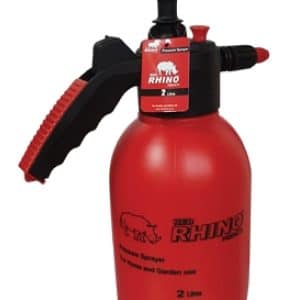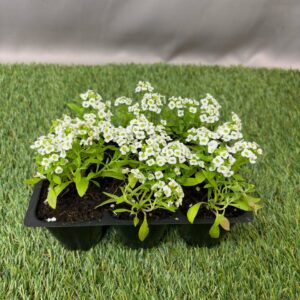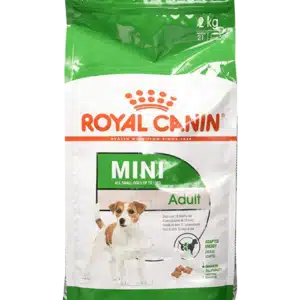8 tips for creating a safe, pet-friendly garden
DIY and how-to
It’s not only us humans who love spending time in our gardens, but our furry companions, too. Many animals are curious about nature, particularly when they’re young, so it’s important to create a safe space for them to enjoy.
These tips will help you ensure your outdoor space is a haven for humans and pets alike.
1. Create designated areas for your pets
Paws off the petunias! Clearly defined paths and areas for your pets to dig, play or do their business will keep your garden looking beautiful while satisfying your pets’ needs. Low-growing hedges can serve a dual purpose by helping you create paths while protecting areas you’d prefer your pets to avoid.
Hardy ground covers and sturdy border plants and shrubs can also act as natural barriers, protecting your more delicate plants from curious paws. Incorporating these elements not only creates aesthetic variation in your garden but guides your pets toward or away from specific parts of your garden.
Read more: How to grow and maintain hedges
2. Make your garden stimulating for your pets
Aside from creating different routes through your garden for your pet to explore, you can also add different textures and surfaces that are stimulating underfoot, like ornamental grass. And of course, there’s nothing a dog loves more than rolling around on freshly mown lawn!
As for cats, it’s all about scratching, climbing and hiding. If you don’t have trees in your garden, you can install vertical logs of various heights for your cats to climb, scratch and jump along. Use plants, such as heather and lavender, to create nooks, crannies and hiding places. These don’t only provide shade in summer, but they also enable your kitty to pretend she’s prowling around in the wild.
P.S: Don’t forget to plant some catnip or cat grass! Here’s how to grow catnip at home.
3. Avoid plants that are dangerous for pets…
Even the most common, innocuous-seeming plants can be incredibly harmful to pets who are curious enough to have a taste. While not all pets like to lay into our plants, it’s always better to be safe rather than sorry, particularly when it comes to young, playful pets.
Lilies, for example, can be deadly to cats: ingesting even a tiny amount (such as licking pollen off their fur or whiskers after brushing past a lily) can lead to kidney failure.
Always read up about the plants you want to purchase before making your selection.
Toxic outdoor plants to avoid include (but not limited to):
- Lilies (all varieties)
- Chrysanthemum
- Hydrangea
- Irises
- Tulips
- Daffodils
- Hyacinth
- Spring crocus
- Sago palm (Cycas)
- Azalea
- Rhododendron
- Any plants that contain cardiac glycosides (e.g.: oleander, dogbane, foxglove, milkweed and lily of the valley).
Toxic indoor plants to avoid include (but are not limited to):
- Plants from the Araneae family (e.g.: philodendron, peace lily, pothos, elephant ear, etc.)
- Kalanchoe
- Spring-blooming flowers
- Dragon tree.
NB: If you ever suspect poisoning in your pet, take them to the vet right away, particularly if your pet is vomiting, drooling excessively, refusing to eat, or showing signs of lethargy or listlessness, or if your pet has diarrhoea. Any symptoms that seem out of the ordinary should receive immediate veterinary attention.
4. Go wild with plants that are safe for your fur babies
There are plenty of plants that will bring colour and vibrancy to your home without putting your pets’ well-being at risk. A quick google will help you identify which plants are safe for your pets, but here’s a short list to start with.
Plants that are safe for pets include (but are not limited to):
- Many kinds of herbs and veggies (read up before making your selection)
- Black-eyed Susan
- African violets
- Snapdragons
- Daisies
- Petunias
- Impatiens
- Hibiscus
- Zinna
- Aster
- Pansies
- Sweet potato vines
Read more: Herbs do wonders for your pets
5. Use non-harmful, organic pesticides, and avoid rat and snail bait
Products like diatomaceous earth are safe for your pets but will help you eradicate irritating pests efficiently. You can also try these clever ways to get rid of pests organically. Did you know that catnip, for example, is an excellent mosquito repellent?
It should also go without saying that if you have pets, you should never use rat, ant, or snail bait on your property. It’s far too easy for inquisitive cats and dogs to ingest these and become ill. Chat to the experts at your local Stodels Garden Centre for advice on the safest products to use around your home.
6. Veto your veggie garden
Remember the hedges we mentioned earlier? Your veggie garden is a great place to establish these to keep your pets away from potentially harmful nibbles.
While some veggies are perfectly safe for your fur babies to eat, others – such as garlic, leeks, onions and chives, as well as unripe tomatoes and tomato plants (ripe tomatoes are fine) – are not. These must be ingested in large amounts to cause issues for your pets, but when it comes to grapes (and raisins), eating only a few can cause serious complications.
Tall beds, window boxes or hanging baskets are also great options for growing veggies safely out of your pets’ grasp.
Read more: Surprisingly dangerous foods for your pets
7. Store fertilisers, herbicides and pesticides safely out of reach
Fertiliser may smell foul to you, but that same aroma can be delightfully appealing to your furry friends. And don’t be fooled by the organic variety: it can be just as harmful to your pets.
If ingested, these types of plant and garden treatments can cause gastrointestinal distress, joint pain or stiffness, or even blockages in your pet’s GI tract. Always read the package instructions, use them as directed, and keep your pets away from treated areas until it’s safe to return.
Tip: A great rule of thumb is to clean up after yourself immediately after a gardening session. Pets love to nose around in dirt and debris, and cleaning up behind you is far easier, safer and cheaper than an emergency visit to the vet!
8. Secure your pool (do it right meow!)
When it comes to swimming pools, pets are as much at risk as children are. Not all pets are strong swimmers, and even the ones that are will struggle to climb out of a pool that isn’t sufficiently full. Many pet owners believe that if their animal falls into the pool, they’ll simply be able to swim to safety. Sadly, this isn’t always the case, and it would be heartbreaking to learn this the hard way.
Cover your pool with a proper net or secure cover. Thermal or ‘bubble’ covers (those that float on top of the water) are not safety covers. In fact, they can pose an even greater risk as they can suck an animal down into the water and make it more difficult or impossible for them to climb out.
As a bonus, pool covers help to reduce evaporation and keep the water clean. No more leaf gunk at the bottom!
You might also like
Shop online
-
ALYSSUM 6 PACK
- R39.99
- Add to cart Learn More
-
- Sale!
MINI ADULT 8+ 2KG OR 8KG
- R321.99 – R1,004.99
- Select options This product has multiple variants. The options may be chosen on the product page Learn More
-
PLASTIC POT TERRACOTTA 7.5CM – 32CM
- R9.99 – R149.99
- Select options This product has multiple variants. The options may be chosen on the product page Learn More




